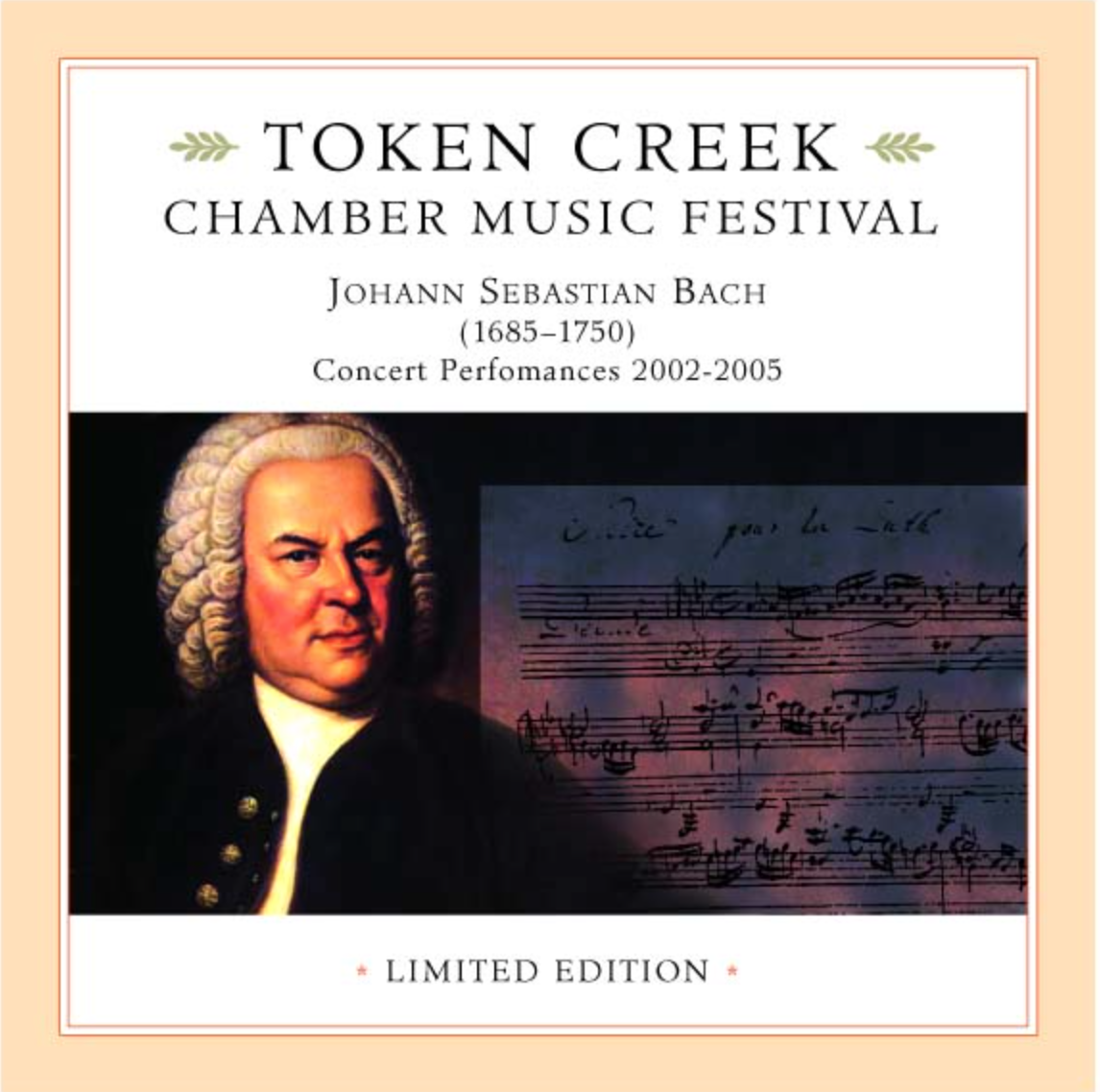TCF 2020 Virtual Season · Music from the Barn
Bach I: Concerti
Program
Concerto in C major, BWV 1061 (ca. 1730) Johann Sebastian Bach (1685-1750) I. Allegro II. Adagio ovvero Largo III. Fuga. Vivace- Judith Gordon & Christopher Taylor, piano
- Rose Mary Harbison & Rictor Noren, violin
- John Harbison, viola
- Parry Karp, 'cello
- Ross Gilliland, bass
- from the 2002 Token Creek Festival
- Larry Neuman & Sally Chisholm, viola
- Rictor Noren & John Harbison, viola
- Karl Lavine, 'cello
- Ross Gilliland, bass
- John Chappel Stowe, harpsichord
- from the 2003 Token Creek Festival
- Rose Mary Harbison, violin
- Kangwon Kim & Edith Hines, violin
- John Harbison, viola
- Rhonda Rider, 'cello
- Ross Gilliland, bass
- John Chappel Stowe, continuo
- from the 2005 Token Creek Festival
- Adam Kuenzel, flute
- Marc Fink, oboe
- Bernhard Scully, horn
- Kangwon Kim, violino principale
- Rose Mary Harbison & Edith Hines, violin
- John Harbison, viola
- Rhonda Rider, 'cello
- Ross Gilliland, bass
- John Chappel Stowe, continuo
- from the 2005 Token Creek Festival
Program Notes
Bach has been included on more programs at the Token Creek Festival than any other composer. The two artistic directors met playing Bach, and his music is their daily touchstone. The Festival has explored many facets of Bach’s work—solo and ensemble pieces, sacred and secular, instrumental and vocal. Arrangements – by Schumann, W.F. Bach, and ourselves – have also played a large role, especially music from his organ catalogue, as well as the “arrangements” necessary to perform his Musical Offering and parts of the Art of the Fugue.
This program assembles concerto performances from the Festival: two from our Brandenburg cycle (begun in 1999 and completed in 2015) and two from Bach’s abundant solo concerto production. Our performances have always sought immediacy, directness, and risk. They are not historical or documentary, or played with any thought that they will be recorded and heard again. The Boston Bach culture in which the co-directors have long found themselves embroiled has benefitted from the presence of some of the world’s finest historical performance experts, with whom we have embraced in dialogue, dispute, and admiration for thirty-five years. (Among our most distinguished guest artist concerts was the wonderful offering by the Boston Museum Trio a few seasons ago.)
With this heritage noted, these performances present little of the cultivation and decorum of the best “historical” versions of these pieces. They are what happened, on an occasion, with the forces assembled.
For the grand, unaccountably seldom played double keyboard Concerto in C we engaged two very different pianists, put them on two very different pianos (a 1984 Steinway and a 1937 Mason & Hamlin), set the single strings out in a flying wedge in our barn, and simply reveled in the relentless energy of the opening dialogue-prelude and the splendid rolling fugue-conclusion (the intervening movement for the two soloists a midnight séance from another planet).
In a very different venue, the charming transplanted Gates of Heaven synagogue on Lake Mendota in downtown Madison, we went with our perception that the strangely scored Brandenburg Concerto No. 6 is one of Bach’s least decorous pieces. It resembles a modern jazz cutting session, a contest of violistic wills, and we assembled two players with the rhythmic swagger to carry it off. On a hunch (the piece is early in Bach’s chronology), we present the contrabass part an octave above its usual location (historical and acoustical justifications are available from the management).
The A Minor Violin Concerto, know to contain in its slow movement some of the composer’s most poignant violin melodies (supported only by a solitary viola), also proposes in its final movement an unusual tempo marking, Allegro assai, which, when taken seriously – as our soloist insisted – results in a real dervish tarantella, far south of its place of origin, rural Saxony.
The alternative horn part, instead of the more often heard piccolo trumpet, for the Brandenburg Concerto No. 2 is authentic, and provides another perspective on the piece. Since the part lies within the “normal” register of the horn and is freakishly high for a trumpet, more than the chord spacings and counterpoints are affected. But in either version of the piece, the most curious passage is the middle of the slow movement, where the material gradually reduces to less than its essence, a rather depressive effect, until finally revived by the violin’s re-entry with the theme.
Only one player appears in all four of these performances – this could be a coincidence.
